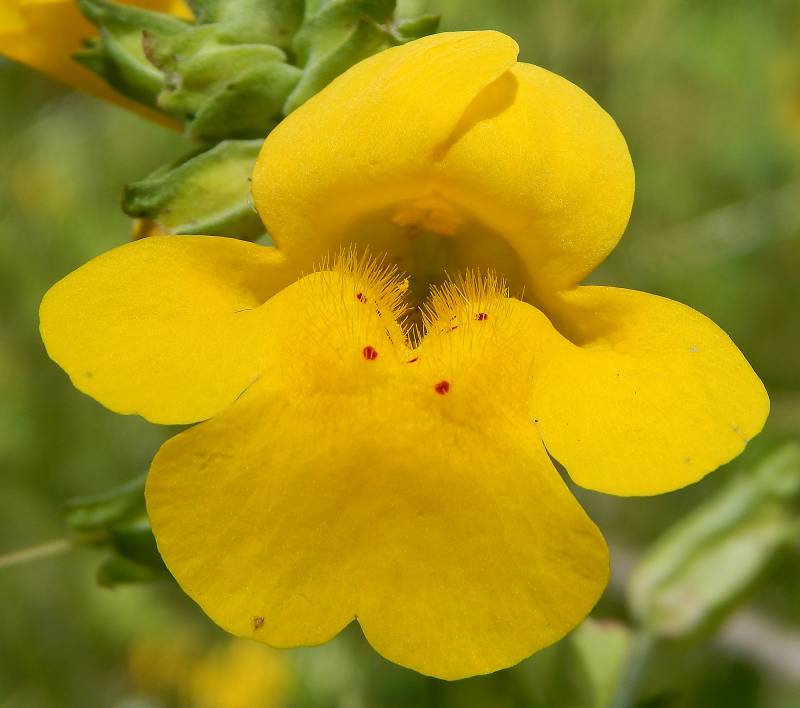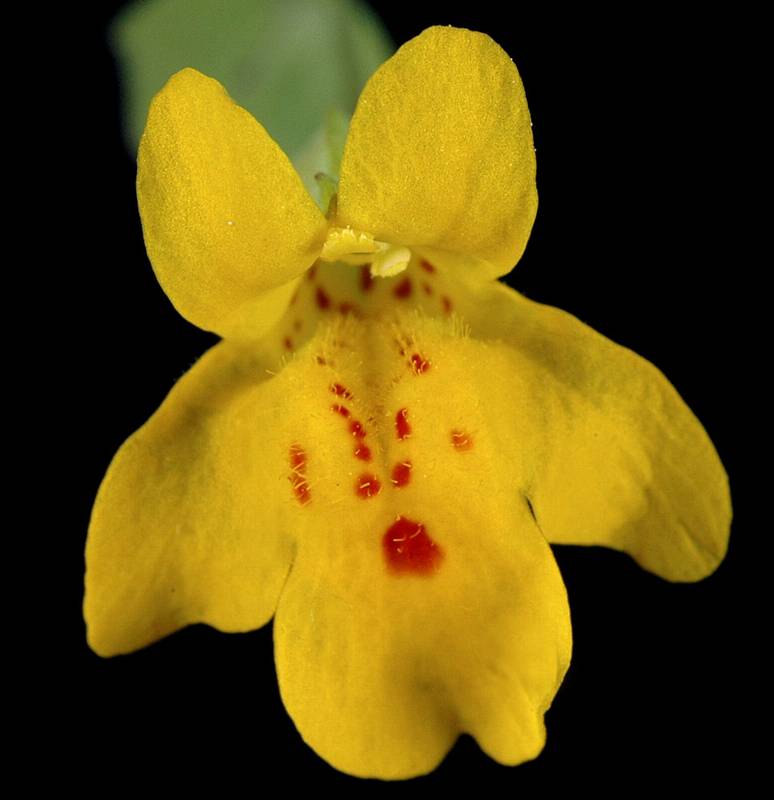Erythranthe decora
Erythranthe guttata
sharp-leaved monkey-flower, showy monkey-flower
seep monkey-flower, yellow monkey-flower
Leaves mostly cauline, basal leaves generally not persistent;
petioles 8-25 mm near base, 3-5 mm mid-stem, sessile distally;
blade ovate-triangular to ovate-lanceolate, typically 20-50 mm long and 10-30 mm broad, palmate venation with 5-7 veins, base rounded to truncate to shallowly cuneate, margins sharply toothed, apex acute, surfaces occasionally becoming glabrous, distalmost surfaces hairy as stems.
Leaves opposite, soft and often somewhat succulent, the blades from quite small to nearly 1 dm. long, irregularly dentate, ovate to reniform-cordate;
leaves nearly palmately veined, the 3-7 main veins arising near the base; lower leaves petiolate, becoming sessile upward, those of the inflorescence reduced and clasping.
Axillary flowers generally 2-7, emerging from nodes at ends of stems; fruiting pedicels 18-35 mm, distalmost pedicels hairy as stems with hairs often barely deflexed;
calyx green with occasional red spots, ovoid, inflated, compressed across sagittal plane, 15-19 mm, hairy as stems, throat closing, lobe margins villous;
corollas yellow, throat commonly red-spotted, symmetric bilaterally, bilabiate;
tube-throat widely funnel-shaped, 18-26 mm, protruding 10-15 mm beyond calyx margin;
limb expanded 22-30 mm;
styles prominently hirsute to villous;
anthers not protruding, glabrous.
Flowers several to many in terminal racemes, on long pedicels, or solitary in dwarf forms;
calyx 5-toothed, irregular, the upper tooth much the largest, the 2 lower ones tending to fold upward;
corolla 1-4 cm. long, strongly bilabiate, with flaring throat, yellow with maroon dots or splotches on the pubescent lower lip;
stamens 4.
Capsules 8-10 mm, included.
Capsule.
Erythranthe decora
Erythranthe guttata
- Local floras:
BC,
OR,
WA
- Local Web sites:
Flora NW,
PNW Herbaria
WildflowerSearch
iNaturalist (observations)
- LBJ Wildflower Center
- SEINet
- Plants of the World Online
- Encyclopedia of Life
- Wikipedia
- Google Image Search
- Local floras:
BC,
CA,
OR,
WA
- Local Web sites:
CalFlora,
CalPhotos,
Flora NW,
PNW Herbaria
WildflowerSearch
iNaturalist (observations)
- LBJ Wildflower Center
- SEINet
- Plants of the World Online
- Encyclopedia of Life
- Wikipedia
- Google Image Search



